One of the most historic buildings in Kingston, Ont. is undergoing a top-to-bottom $950,000 restoration.
The Bishop’s House project includes the installation of both a new copper mansard roof and a new EPDM one, restoration of the cornice below, the refurbishment of 26 windows and the replacement of seven others, wholesale masonry repointing and some stone replacements.
Financed by the City of Kingston, the whole building envelope restoration is being administered by RJC Engineers, the prime heritage building, building envelope and structural consultant.
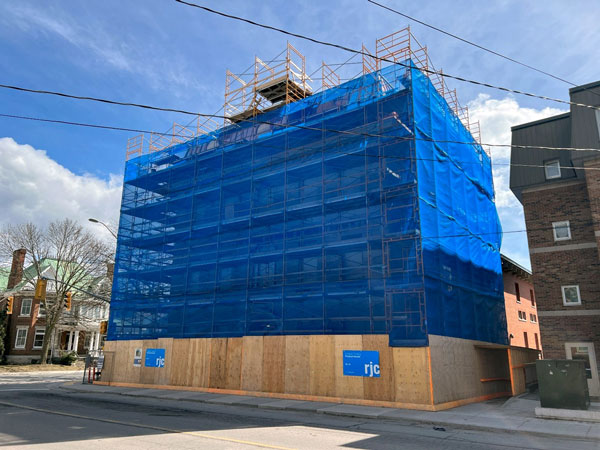
Emmons and Mitchell Construction Limited is the general contractor and there are a variety of specialized trades involved include masonry subcontractor Optimal Construction Ltd.
Despite being bounded by scaffolding with protective netting, the four-storey building has remained open during the project with “very minimal partial closures,” says Michael Park, a principal with RJC and the head of its Ottawa-Kingston building sciences and restoration practices division.
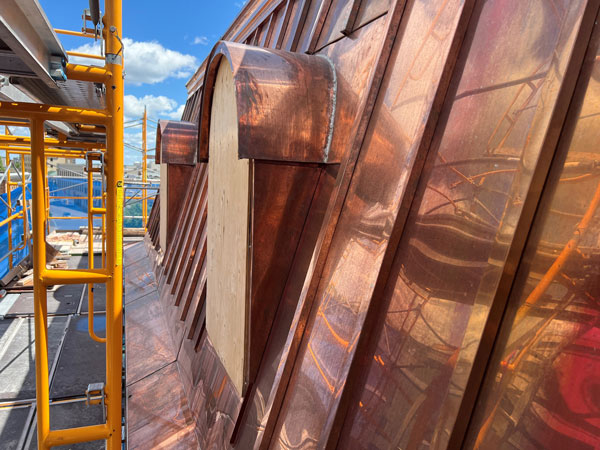
The deterioration was widespread, but of varying degrees and can be attributed to a number of factors including widespread partial failure of the stone lintels above the windows and the fact the building barely escaped being demolished 50 years ago, he says.
Designated under the Ontario Heritage Act, the building was constructed of locally mined Kingston limestone in 1822 to serve as the residence of St. Joseph’s Parish and was the home of Bishop Alexander Macdonell, the first Catholic Bishop of then-Upper Canada from 1826 until his death in 1840.
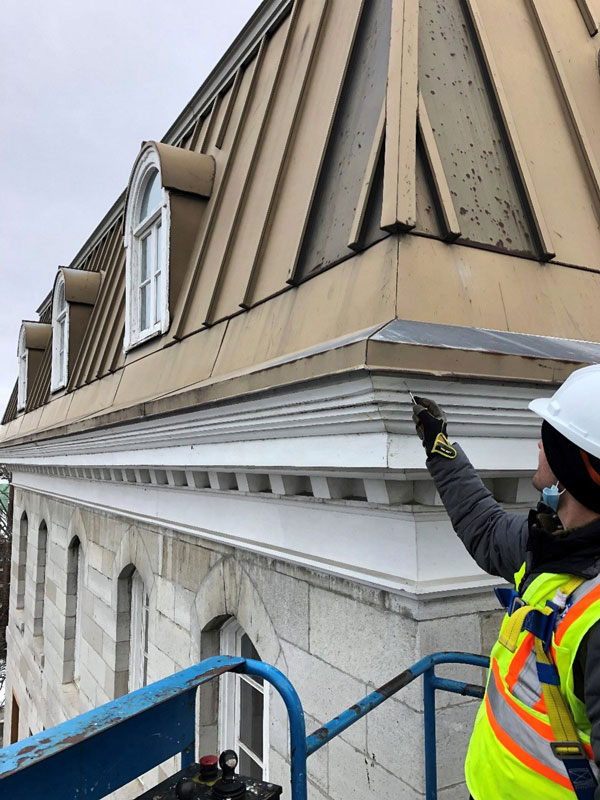
Later it became part of a convent and underwent significant modifications. The convent was closed in 1969. Two years later the adjacent convent buildings were demolished, although the Bishop’s House was saved from total demolition part way through.
“The Bishop’s House stood as a building shell (no roof, windows or interior elements). The Bishop’s House was restored in 1978 to become part of the newly constructed Kingston Frontenac Public Library,” states a description.
However, the building was probably “destabilized” from the partial demolition and the culmination of countless freeze/thaw cycles. The onslaught of age took its toll on the house, especially the stonework, says Park.
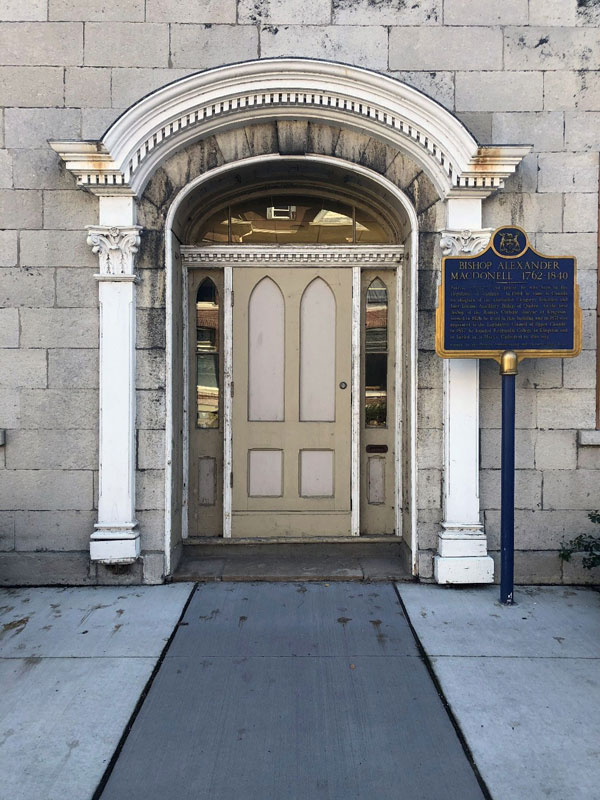
In 2021 RJC was commissioned by the City of Kingston to conduct a whole building assessment. As part of its report, the consulting firm put forth several recommendations, including prioritized local repairs and an entire envelope restoration, which was the option the city chose, he says.
The project got underway this past winter and can be categorized into three main components, says Park: masonry, wood elements and windows, and the roofs.
Restoring the stonework has required a combination of wholesale repointing, in-situ stitching, reinforcing resurfacing repairs, the injection of Dispensed Hydrate Lime (an engineered repair mortar), and the insertion of some new stone to replace badly deteriorated ones that couldn’t be salvaged, says Park.
As for the restoration of the windows, that was a two-stage process.
Defective frames of the 27 windows on the ground, second and third floor windows were repaired onsite, while the sashes were restored off site in a local carpenter’s shop. Most of the original single glass panes were reinserted, although a few badly cracked ones had to be replaced. While that was occurring the openings had to be boarded up with plywood, says Park.
It was a different scenario with the seven dormer windows on the mansard level.
“They were so far deteriorated they couldn’t be repaired.”
However, those dormer windows were replacement windows inserted sometime after the building’s construction and the deterioration created an opportunity to recapture the original heritage look.
In a research effort, which included analyzing old photographs in the Queen’s University archives, the consultant designed new heritage-style windows in co-operation with the city’s planning department and its heritage committee, he says.
The corroded decades-old metal mansard roof also had to be replaced and that also was a source of negotiations with city officials on what it should be replaced with. Eventually, it was decided it should be a copper one.
While this was not an original material, there are a number of buildings in the immediate area with copper roofs, including Kingston’s historic city hall and St. George’s Cathedral.
“So copper was deemed an historic supporting material within the sightlines of those buildings.”
Work on the Bishop’s House should be completed by late this summer, says Park.


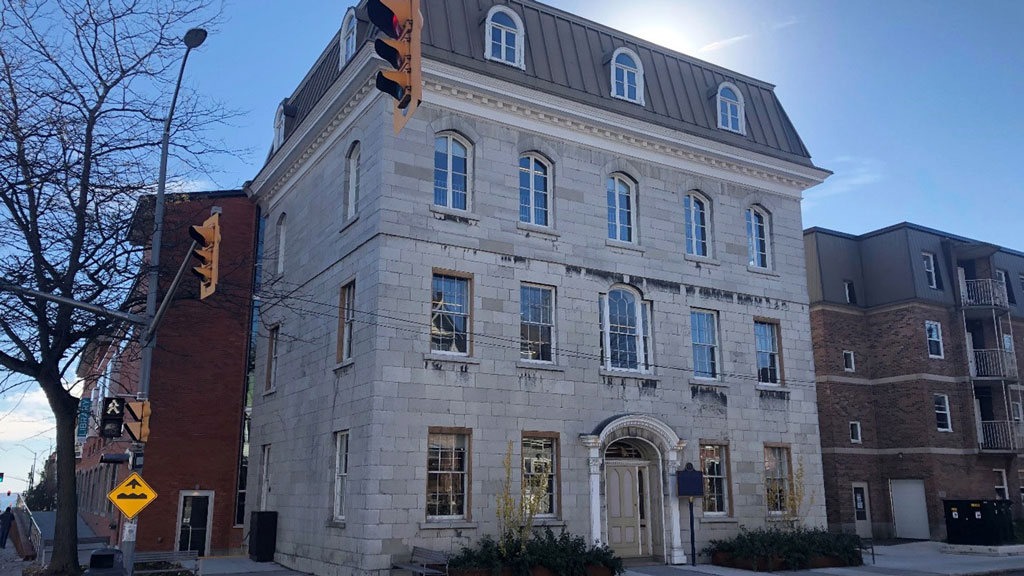

Recent Comments
comments for this post are closed